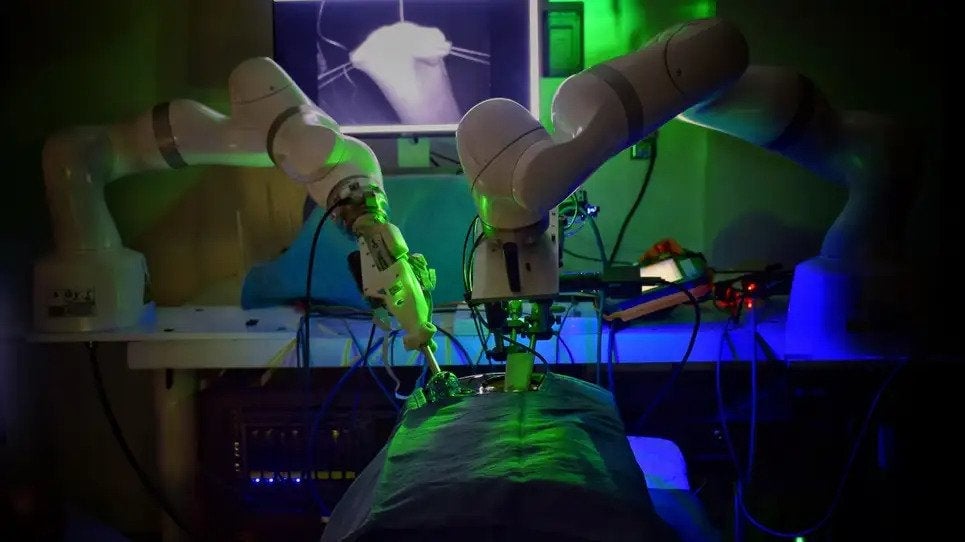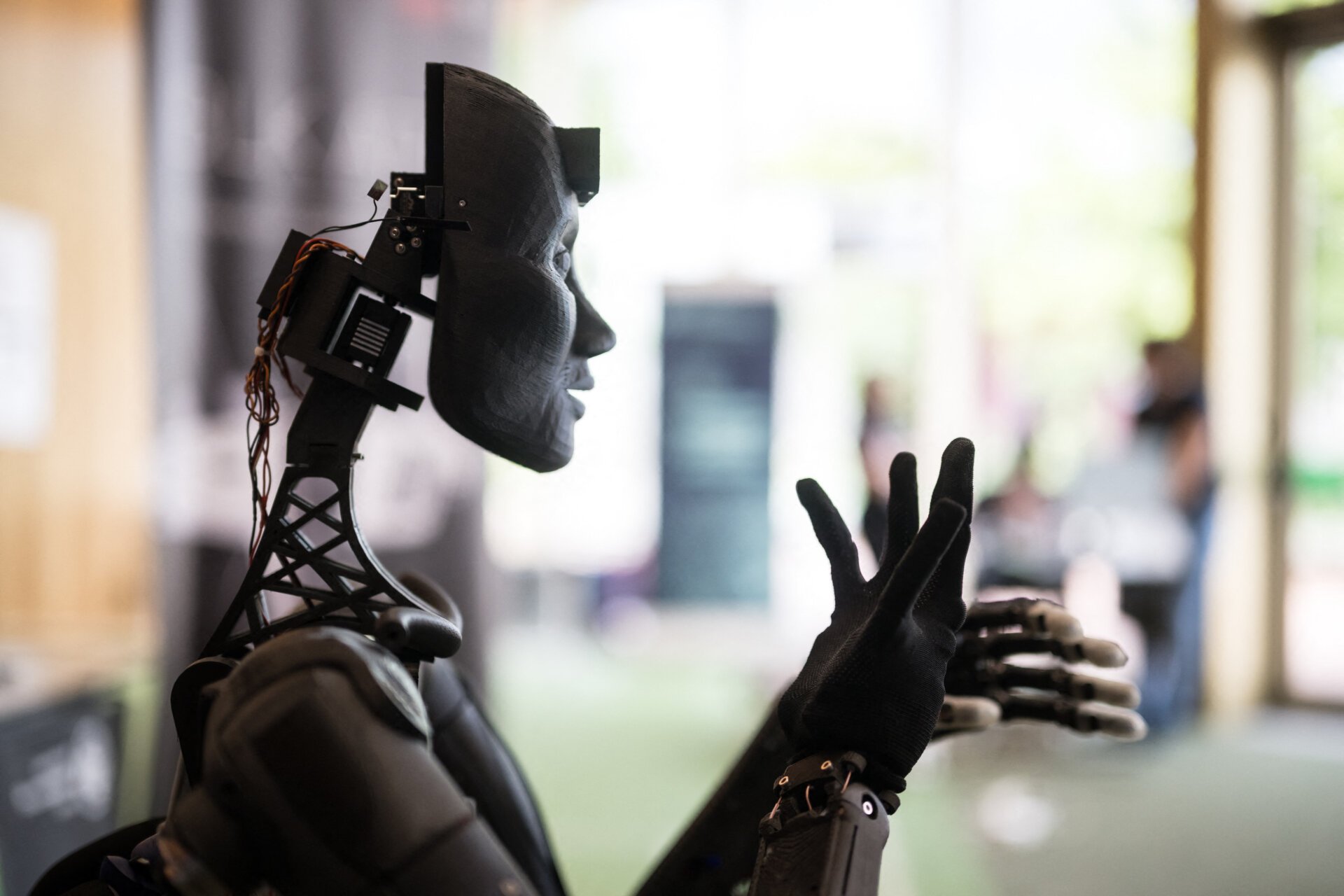The integration of artificial intelligence into healthcare is rapidly advancing, with AI-driven visit summaries and patient condition analysis becoming increasingly common. Now, groundbreaking research reveals the potential of ChatGPT-like AI training techniques to enable surgical robots to operate autonomously. This raises both exciting possibilities and serious ethical and practical questions.
Training Robots Through Imitation
Researchers at Johns Hopkins University and Stanford University have developed a training model using video recordings of human-controlled robotic surgical procedures. By mimicking actions observed in these videos, the robots learn to perform surgical tasks, potentially eliminating the need for intricate programming of each individual movement. As reported in the Washington Post, these robots have demonstrated the ability to manipulate needles, tie sutures, and even correct errors like retrieving a dropped needle, all without human intervention. The next phase of research involves combining these individual skills to perform complete surgeries on animal cadavers.
Robotic Surgery: Current State and Future Concerns
Robotic assistance in surgery is not new. Robotic arms offer enhanced precision, enabling procedures like the now-famous “surgery on a grape,” and facilitating approximately 876,000 robot-assisted surgeries in 2020 alone. These robotic instruments provide access to areas within the body unreachable by human hands, execute intricate tasks with unwavering precision, and minimize nerve damage. However, current surgical robots are manually controlled by surgeons. The introduction of autonomous robots shifts this dynamic, raising concerns about the limitations of AI.
Skeptics point out that AI models like ChatGPT, while impressive, primarily mimic observed behavior rather than demonstrate true understanding. The vast complexity of human anatomy and the unpredictable nature of surgical procedures present significant challenges. What happens if an AI encounters a situation it hasn’t been trained for? How will it react to unforeseen complications that demand immediate, informed decisions?
Regulatory Oversight and Ethical Implications
The deployment of autonomous surgical robots will necessitate rigorous scrutiny and approval from regulatory bodies like the Food and Drug Administration (FDA). Unlike AI tools used for visit summaries, which are technically subject to physician review, autonomous surgical robots will require a different level of oversight. The potential for AI to make inaccurate recommendations or “hallucinate” information, as seen in some applications, underscores the need for caution. Overworked physicians may be tempted to rely too heavily on AI, potentially overlooking crucial details. This echoes concerns about the use of AI in military target identification, where over-reliance on AI-generated information without proper human verification has led to errors.
Healthcare, with its inherent life-or-death implications, presents considerably higher stakes than other sectors. A misdiagnosis or surgical error by an AI system has far graver consequences than a misinterpreted email. The question of liability becomes crucial – who is responsible when an autonomous robot makes a mistake? As the director of robotic surgery at the University of Miami pointed out in the Washington Post, the anatomical variations between patients and the diverse manifestations of diseases demand nuanced understanding that current AI systems may lack. Training robots to interpret complex medical imaging, like CT scans and MRIs, remains a significant hurdle.
The Human Factor
The pursuit of infallible AI is unrealistic. While autonomous surgical robots hold research promise, the potential fallout from a botched procedure would be devastating. The current system of accountability for human surgeons, based on years of training and licensing, provides a level of assurance that AI systems cannot yet replicate. Furthermore, over-reliance on autonomous robots could lead to the atrophy of surgical skills in human practitioners, similar to how dating apps can diminish social skills. Addressing the systemic issues contributing to physician shortages, rather than relying on technological quick fixes, may be a more sustainable solution. The projected shortage of 10,000 to 20,000 surgeons by 2036, as reported by the American Association of Medical Colleges, underscores the urgency of this issue.
Conclusion
The development of AI-powered surgical robots represents a significant leap forward in medical technology. However, alongside the potential benefits come considerable challenges. Thorough testing, stringent regulatory oversight, and careful consideration of the ethical implications are crucial to ensure patient safety and the responsible integration of this transformative technology into healthcare. Addressing underlying systemic issues, like physician shortages, should also remain a priority.










